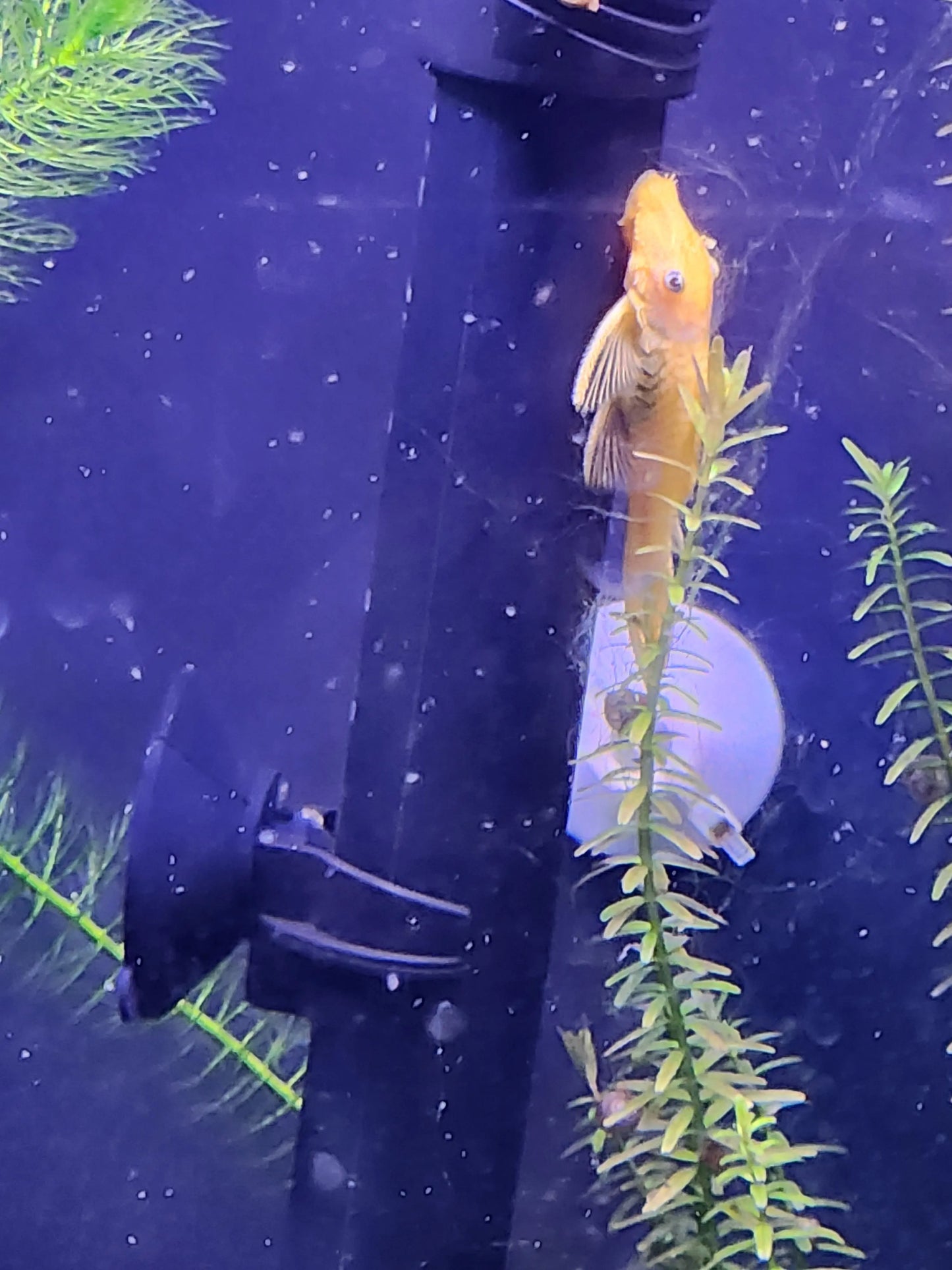🐟 Blue-Eye Lemon Pleco (Hypancistrus sp. / L144 variant) – Striking Freshwater Pleco
🐟 Blue-Eye Lemon Pleco (Hypancistrus sp. / L144 variant) – Striking Freshwater Pleco
Low stock: 3 left
Couldn't load pickup availability
🐟 Blue-Eye Lemon Pleco (Hypancistrus sp. / L144 variant) – Striking Freshwater Pleco
Description: The Blue-Eye Lemon Pleco is a stunning aquarium favorite, easily recognized by its bright yellow body and vivid blue eyes. A peaceful bottom-dwelling pleco, it is both an efficient algae grazer and a colorful showpiece for freshwater aquariums. This hardy species does well in community and planted tanks, making it a popular choice for aquarists who want beauty and utility in one fish.
Care Information
- Common Name: Blue-Eye Lemon Pleco
- Scientific Name: Ancistrus sp. (often L144 variant)
- Care Level: Easy
- Temperament: Peaceful, bottom-dweller
- Max Size: ~4–5 inches
- Tank Size: Minimum 30 gallons
- Diet: Primarily herbivorous – algae, sinking wafers, blanched veggies; will also accept prepared foods
- Water Parameters:
- Temperature: 74–80°F (23–27°C)
- pH: 6.5–7.5
- Substrate: Sand or fine gravel with hiding spots (caves, driftwood)
❓ FAQ
Q: Is the Blue-Eye Lemon Pleco good for planted tanks?
A: Yes, it is completely plant-safe and helps reduce algae.
Q: Does it need driftwood?
A: While not required, driftwood provides shelter and natural grazing surfaces.
Q: Is it aggressive?
A: No, it is a peaceful species, suitable for community tanks.
Q: How many should I keep together?
A: They can be kept singly or in small groups if the tank has enough hiding spots.

